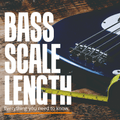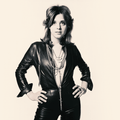What are Fender Bullet strings?
By Strings Direct – 29 August, 2023
 If you’ve scoured our site in the past and taken a look at our electric guitar sets section, you may have come across Fender’s range of electric guitar strings and in particular their Bullet strings.
You’d initially be forgiven for thinking the term ‘Bullet’ is yet another adjective adopted by a string manufacturer to help describe the “Punchy”, “Penetrating” or “Explosive” tonal power of their strings, however, if you open up a set, you’ll soon see that there’s more to the Fender Bullet strings than just a name.
If you’ve scoured our site in the past and taken a look at our electric guitar sets section, you may have come across Fender’s range of electric guitar strings and in particular their Bullet strings.
You’d initially be forgiven for thinking the term ‘Bullet’ is yet another adjective adopted by a string manufacturer to help describe the “Punchy”, “Penetrating” or “Explosive” tonal power of their strings, however, if you open up a set, you’ll soon see that there’s more to the Fender Bullet strings than just a name.
So what are the Bullets all about?
Traditionally, most steel string guitar sets are fitted with ball ends (circular ring of steel) at the bridge end of the strings which are secured in position using what is commonly referred to as a “lock twist”. A lock twist is where the string itself (or the string’s core in the case of wound strings) travels around the outside edge of the ball end and when the string returns back, it twists around itself effectively trapping the ball end (see image below). It is this tiny ball end attached to the end of our string that holds the string in position allowing it to be brought up to pitch without being pulled through the bridge….effectively acting as an anchor.
Whilst the ball end is a necessity and integral part of a guitar string’s anatomy, many string manufacturers opt to concentrate on developing other elements of the string in a bid to improve their product’s performance. As a result, the humble ball end’s design hasn’t changed much over the years. However, back in the ’70s, the great minds at Fender saw a need for a change and in doing so, created their Bullet Strings range.
It is this tiny ball end attached to the end of our string that holds the string in position allowing it to be brought up to pitch without being pulled through the bridge….effectively acting as an anchor.
Whilst the ball end is a necessity and integral part of a guitar string’s anatomy, many string manufacturers opt to concentrate on developing other elements of the string in a bid to improve their product’s performance. As a result, the humble ball end’s design hasn’t changed much over the years. However, back in the ’70s, the great minds at Fender saw a need for a change and in doing so, created their Bullet Strings range.
So why the need for developing the Bullet End? What’s wrong with the humble ball end?
Well, nothing really! In fact, ball ended strings are a staple for nearly all steel string sets and continue to be the norm today. Fender even make ball ended strings as well. However, it was nearly 50 years ago that the Fender engineers saw a flaw in this design, particularly when players were using ball ended strings in conjunction with tremolo equipped bridges. Because the string travels around the ball end rather than straight through it, it creates a small area of ‘slack’ string directly above the ball end (see image below). It was this particular area of the string that the Fender bods pinpointed as a potential sticking point and in particular, how this part of the string allowed the ball end to move about when the tremolo is used or when it is bent.
As a tremolo is used, the bridge moves up and down, causing the tension in the string to raise and drop. As this happens, the ball end inevitably moves about as it is sat within the block of the bridge. Fender's concern was that when the tremolo returns back to its ‘original’ position, the ball end of the string may not necessarily return to the exact same position it was in before the trem was used. Granted, the position change would be extremely small, however, it can be significant enough to cause potential tuning issues. Of course, it’s not just tremolo use that can cause the ball end to move, bending the string can also have a similar effect.
In light of this, Fender sought a solution with an objective to keep the anchor of the string in a fixed position before, during and after the string underwent any tremolo use or bends. Their solution? The Bullet End.
It’s the unique patented bullet shape that allows the string to sit nice and snuggly in the tremolo block meaning there is little to no room for the bullet to move even when it's subjected to heavy tremolo use or big bends. It’s this small change that helped Fender create a more ‘stable’ string that helped tuning and to deliver greater sustain too.
Fender also cited that the strings don’t tend to get caught up in the tremolo block quite as much as standard ‘ball end’ strings do when removing them, so another little billy bonus there too!
It was this particular area of the string that the Fender bods pinpointed as a potential sticking point and in particular, how this part of the string allowed the ball end to move about when the tremolo is used or when it is bent.
As a tremolo is used, the bridge moves up and down, causing the tension in the string to raise and drop. As this happens, the ball end inevitably moves about as it is sat within the block of the bridge. Fender's concern was that when the tremolo returns back to its ‘original’ position, the ball end of the string may not necessarily return to the exact same position it was in before the trem was used. Granted, the position change would be extremely small, however, it can be significant enough to cause potential tuning issues. Of course, it’s not just tremolo use that can cause the ball end to move, bending the string can also have a similar effect.
In light of this, Fender sought a solution with an objective to keep the anchor of the string in a fixed position before, during and after the string underwent any tremolo use or bends. Their solution? The Bullet End.
It’s the unique patented bullet shape that allows the string to sit nice and snuggly in the tremolo block meaning there is little to no room for the bullet to move even when it's subjected to heavy tremolo use or big bends. It’s this small change that helped Fender create a more ‘stable’ string that helped tuning and to deliver greater sustain too.
Fender also cited that the strings don’t tend to get caught up in the tremolo block quite as much as standard ‘ball end’ strings do when removing them, so another little billy bonus there too!
What Bullet Strings are available?
The Fender Bullets were originally launched back in 1974 and over the years, Fender have tweaked their range here and there. Their lineup currently consists of sets available with a wrap wire in Pure Nickel and Nickel Plated Steel. They’re also available in a range of gauges too including 09-42, 09-46, 10-46, 11-49. Fender have even made some of their popular Artist Signature Strings available with a Bullet End. If you’re partial to a more ‘Customised Gauge’ string, Fender’s Yngwie Malmsteen and Jimi Hendrix Bullet Sets may tickle your pickle! Both sets utilise gauges that are slightly different from the norm and these are listed below Gauges; Yngwie Malmsteen Signature Set - 08, 11, 14p, 22, 32, 46 Jimi Hendrix Signature Set - 10, 13, 15p, 26, 32, 38
Can I use the Fender Bullet Strings on my guitar?
There is no doubt that Fender designed their line of Bullet strings purely with their Stratocaster in mind and the Bullet shape was utilised as it lends itself nicely to fit perfectly inside the upper part of a Strats tremolo block. However, the question you may be asking is “can you use these Fender Bullets on any other guitars?” What about other Fender instruments? The diameter of the Bullet itself measures 4.30mm and just over 8mm in height. This makes it slightly larger than a traditional ball end in all areas and inevitably means it may struggle to fit certain guitars, particularly those where it’s tight to fit strings. Not to mention, the unique shape of the bullet certainly plays a part in dictating what guitar these strings will fit. It is often a difficult one to call, but we tested this out on several other guitars to see how compatible these actually were.Telecaster
When we fitted a Bullet string to a Squier Thinline Custom we found that whilst it tuned up fine and played absolutely fine, when you turned the guitar over, you could see that the Bullet was sitting just over to one side of the ferrule indicating that it wasn’t totally snug and central within the string ferrule. After speaking to many customers over the years, we are aware many will use Fender Bullets on their Telecasters with no issues. However, judging from the way the string sat in the ferrule, ball ends appear to be a better solution here. It’s worth noting that Fender do actually produce standard ball end strings too and they fit these to their Telecasters, Mustangs, Jazzmasters and Jaguars as standard when they leave the factory… this may give us a big clue as to what they think is best too!
Wraparound Bridge
From the photo, you can clearly see that the Bullet End is sticking out of the socket where the ball end of the string would usually sit. In this particular instance, the Bullet End was clearly too large for the hole and we’d be pretty certain it would be the same for other similar wraparound style bridges too. As you can see, the other strings on this particular guitar all have ball ends and these appear to be better fits for this type of bridge.
Tune-o-Matic Bridge and Tailpiece Combination
As you can see in the image below, the back side of the Bullet pokes out from the socket where the ball end of the string would usually sit. Nevertheless, it does appear as though the bullet is sitting in the tailpiece fairly comfortably and the back side of the Bullet End we are seeing is probably the is extra 4mm of length a Bullet End has over a standard ball end. However, It is difficult to see how nicely the nose of the Bullet is sitting within the inside of the tailpiece so whilst it may get you out of trouble, we would still make the assumption that these strings are still not an ideal fit for this particular type of bridge.
Acoustic Guitar
As we know, strings are fitted to an acoustic guitar in a slightly different way compared to an electric guitar. When the Fender Bullets were first introduced in the ’70s, Fender initially made a set of bronze-wound strings available with a Bullet end, however, these are no longer produced. Pure Nickel and Nickel Plated Steel sets are typically used on Electric Guitar Sets, however, for the sake of completion, we also tested a Bullet on an acoustic guitar. These actually worked fine, the Bullet end sat in the bridge with no issues, however, with the nickel variations only being available in the Bullet range, it would seem an odd choice to opt for a set of nickel bullets over a traditional set of acoustic strings, and you wouldn’t get the nice bright resonance you usually get from acoustic bronze strings. However, with experimentation comes innovation, so if you fancy taking a stroll of the beaten track so to speak, go for it! It’s quite clear from these small (albeit non-exhaustive) tests, that the bullets have clearly been created solely with the Stratocaster in mind. Whilst there is nothing stopping you from trying out a set for yourself on your own guitar, it does appear that other guitars won’t necessarily reap the benefits Stratocasters get through using a bullet string. In fact, judging by how the string sat in some of the examples above, you may argue that using Bullet strings on a non-Strat guitar could well have an adverse effect on the guitars tuning and sustain in some instances. We hope this has given you all a little insight into the world of Fender Bullets. We’d love to hear if you guys have had experiences of the Fender Bullets and if you’ve experimented with using them on your various models of guitar. As always, any questions, please feel free to get in touch or leave a comment below. We love reading and answering your questions and input, it’s always welcome. Have a great Easter break Much love Strings Direct




